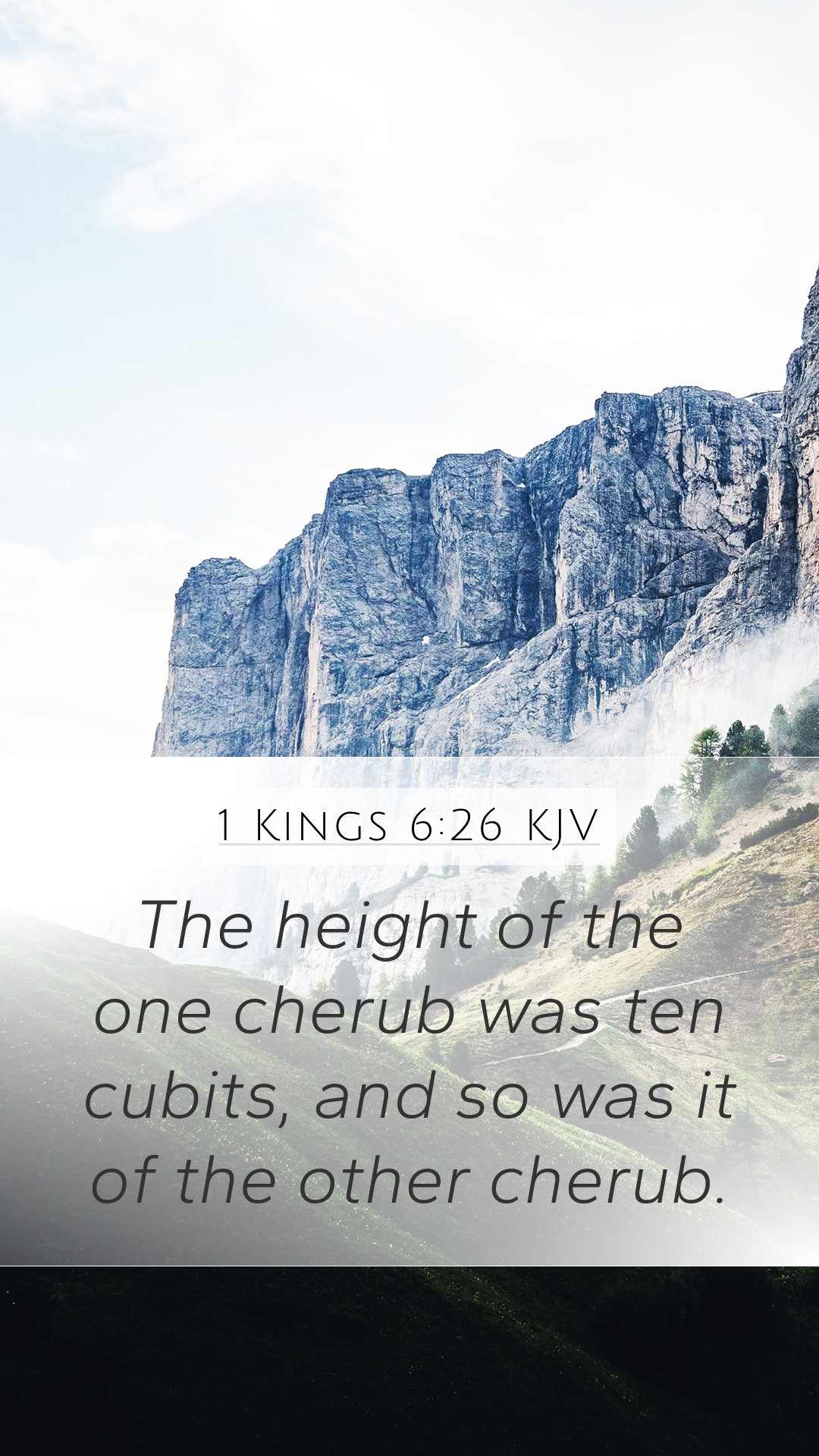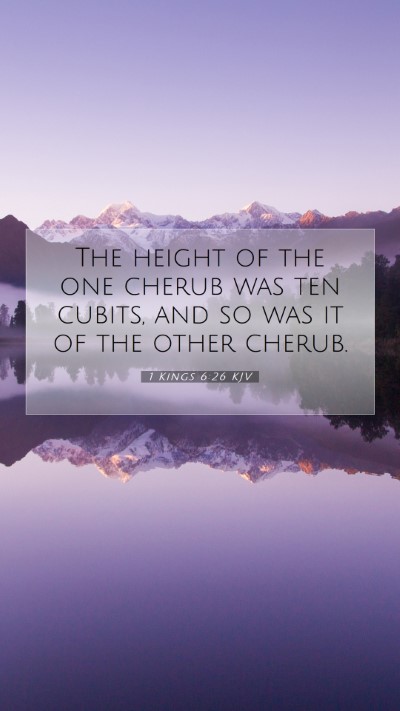Understanding 1 Kings 6:26
1 Kings 6:26 states: “The height of the one cherub was ten cubits, and so was it of the other cherub.” This verse describes the dimensions of the cherubim which were made of olive wood and placed in the Most Holy Place of Solomon's Temple. The significance of this passage lies in the understanding of divine presence and the symbolic representation of God's guardianship and majesty.
Bible Verse Meanings
This verse emphasizes the grandeur and intricacy involved in the design of the temple. The cherubim, being immensely tall, symbolize both the holiness of God and the majestic depth of His glory. Matthew Henry notes the impressive nature of these heavenly beings, suggesting that they serve a vital role in the temple, representing the heavenly hosts that serve God.
Bible Verse Interpretations
- Symbol of Divine Presence: The cherubim act as a manifestation of God's presence among His people. They were not merely decorative, but serve a significant role in showcasing the intersection between heaven and earth.
- Guardianship: The cherubim have historically been seen as protectors. Their presence in the Most Holy Place indicates a divine guarding of holiness.
- Representation of Heavenly Beings: Adam Clarke emphasizes that cherubim represent heavenly beings that perpetuate the worship and glory of God, signifying His omnipotence and majesty.
Bible Verse Explanations
In analyzing the dimensions mentioned, we find a pattern of divine precision in the construction of the temple. Albert Barnes asserts that each detail, including the dimensions of the cherubim, reflects the importance of worshiping God in His majestic holiness. This serves as a reminder to believers of the reverence required when approaching the Holy One.
Scripture Analysis
When engaged in Bible study, one finds that the height of the cherubim at ten cubits (approximately 15 feet) symbolizes not only their grandeur but also highlights the larger theological implications behind the architecture of the temple. The design was purposefully intended to reflect the majesty of God's being and His sanctuary, which was to be a place of divine encounter.
Biblical Exegesis
This verse necessitates a thorough examination of the cultural and historical context of the Israelites, as they see the connection between the physical representations of God in their worship rituals and the spiritual truths they uphold. Understanding how cherubim reflect God's holiness aids in the interpretation of Israelite worship and its significance throughout biblical history.
Bible Study Insights
Informing modern Bible study groups or online Bible study sessions, this scripture encourages deeper reflection on the nature of God's presence in worship. By understanding the symbolic presence of the cherubim, believers can better appreciate the significance of approaching God with reverence and awe.
Cross References
- Exodus 25:18-20: The instructions for making cherubim for the mercy seat that cover the Ark of the Covenant.
- Genesis 3:24: The placement of cherubim to guard the way to the Tree of Life after Adam and Eve were expelled from the Garden.
- Ezekiel 10:1-22: A vision of cherubim in Ezekiel's prophetic imagery, highlighting their connection with the divine chariot and presence of God.
Conclusion
Overall, 1 Kings 6:26 provides insight into the importance of the cherubim within the temple, symbolizing not just artistic beauty but a profound recognition of God’s proximity to His people. As one comes to understand this scripture, it becomes clear how pivotal these elements are in both the Old Testament worship practices and their implications for today's believers.
Through this understanding, one can draw closer to God, grasping the depth of His holiness and the call to honor that presence in daily worship and life, highlighting the everlasting relevance of ancient truths in Scripture.


